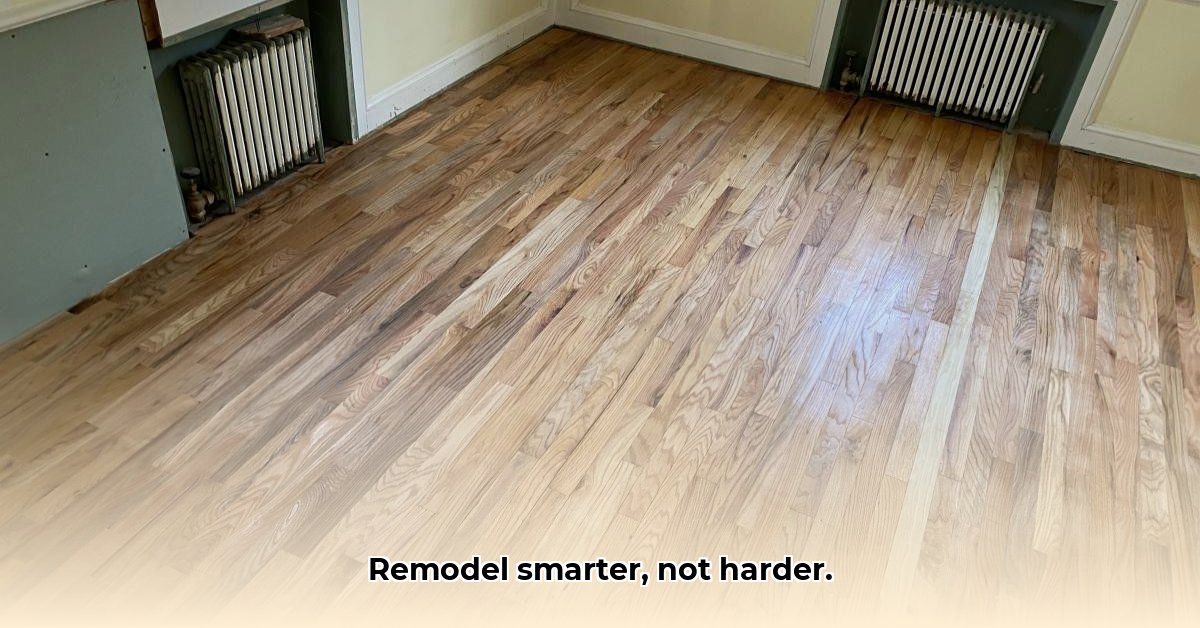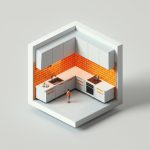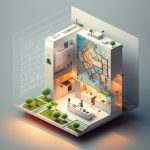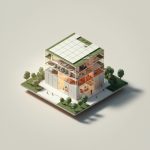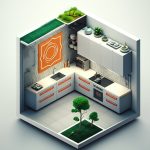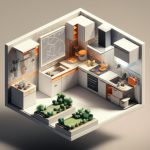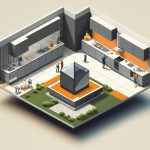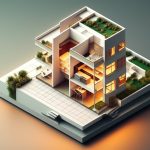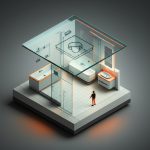Thinking about remodeling? Getting the layout right is key to a happy project and avoiding costly mistakes. This guide will walk you through choosing the best tools and techniques to design your dream space, whether you’re tackling it yourself or working with a designer. We’ll show you why using 3D models is a game-changer, help you plan smart for the future, and even tell you when bringing in the pros is worth it. From maximizing your space to making sure your design fits your lifestyle perfectly, we’ll give you the inside track on making your renovation a success. For more home renovation ideas, check out this helpful resource on floor plan designs.
Designing Efficiently: The Core Principles
Remodeling is a significant undertaking, frequently accompanied by stress and unforeseen challenges. Imagine you could dramatically diminish that stress and sidestep costly errors? A meticulously crafted floor plan is paramount. Let’s explore how to design efficiently right from the beginning, focusing on space optimization and the right visualization tools. Studies show that projects with well-defined floor plans boast a significantly higher satisfaction rate.
Why Upgrade Your Approach: The Limitations of Traditional Drawings
Traditional two-dimensional floor plans are like maps – they show the roads but lack the city’s vibrant energy. A 2D plan provides a general idea but misses the space’s “feel.” It’s difficult to imagine furniture placement or natural light accurately, leading to expensive surprises, like realizing an essential electrical outlet is missing. Such oversights can lead to projects exceeding their initial budget. Technology offers solutions to create interactive, immersive 3D models.
Now, you can create interactive 3D models allowing you to virtually “walk” through your renovated space before laying the first brick. This helps you spot potential problems early, improving client satisfaction and keeping your budget on track. This detailed preview lets you spot potential problems – from awkward hallways to poorly placed outlets – before they become costly fixes.
A Step-by-Step Guide: Mastering 3D and Interactive Design Tools
Ready to create floor plans that truly impress? Here’s a guide to leveraging modern technology:
-
Choose the Right Tools for the Job: There are ample software options for skill levels and budgets. For complex projects, use robust, interactive 3D modeling programs offering realistic renderings and virtual walkthroughs. For smaller projects, simpler digital tools like collaborative whiteboards suffice. Even sketches can spark initial ideas. Selecting the right technology can decrease project completion time.
-
Teamwork Makes the Dream Work: Collaborate With Your Clients: Involve clients early and often to foster transparency and build confidence. Interactive floor plans simplify explaining design choices and lead to fewer conflicts. They’ll be more engaged, leading to happy customers.
-
Embrace the Power of Iteration: Refinement is Key: Digital design provides flexibility for quick changes to dimensions, furniture positions, and layouts. This iterative process results in a more polished and functional outcome. This iterative design process engages your clients throughout the project.
-
Virtual Walkthroughs: Spotting Hidden Problems Before They Happen: Use virtual walkthroughs to identify potential issues, like traffic flow or lighting, before construction.
Choosing the Best Tools: Comparing Design Options
The right tool depends on the project and needs. Here’s a quick comparison chart with recommendations for visualization technology:
| Tool Type | Pros | Cons | Ideal Use Cases |
|---|---|---|---|
| 2D Drafting Software | Simple, inexpensive, readily available | Limited visualization, potential for miscommunication and errors | Small projects, quick sketches, basic layouts |
| 3D Modeling Software | Immersive visualization, early problem detection, increased client satisfaction | Steeper learning curve, higher cost | Larger projects, clients needing detailed visualization, complex designs |
| Interactive Whiteboards | Excellent for brainstorming, easy collaboration, cost-effective | Limited detail, may not be suitable for intricate floor plans | Initial planning, client meetings, simpler projects |
Essential Planning Principles: Beyond the Software
Even with sophisticated software, success comes from combining technology with smart planning. Consider these elements alongside technology:
-
Space Optimization: Maximize every square foot with clever storage and well-planned traffic flow.
-
Client Needs: Reflect the client’s lifestyle and preferences to create a functional space.
-
Budgeting: Balance cost-effective materials and finishes with those that add style and value.
By embracing modern technology and following these planning principles, you’ll create exceptional floor plans that delight both you and your clients. Ready to elevate your design process?
Selecting the Right Software: 3D Floor Planning for Architectural Design Projects
Key Takeaways:
- The floor plan software market offers diverse options for varying needs and budgets.
- Options range from free browser-based tools to advanced, subscription-based platforms.
- Software selection depends on pricing models, features (2D/3D, collaboration), ease of use, and device compatibility.
- Consider project requirements carefully; a “one-size-fits-all” solution is unlikely.
- Free or low-cost options suffice for basic needs, while professional-grade software offers advanced capabilities and support.
Assessing Your Project: Understanding Your Needs
Before exploring software options, evaluate your project’s scope and your technical skills. Are you a seasoned architect working on a complex commercial building, or a homeowner planning a kitchen remodel? This determines the software’s necessary capabilities. Consider both short-term and long-term project goals before making your decision. Is your budget flexible, or do you need to stick to free or low-cost options?
The Software Landscape: 2D, 3D, and Collaboration Tools
The floor planning software market is expansive. Options include basic 2D programs, feature-rich 3D modeling software, and collaborative digital tools.
-
2D Software: Ideal for quick sketches and basic layouts. They may lack the visual richness for client presentations.
-
3D Software: Offers realistic visualizations for virtual walkthroughs, best for complex projects. These are usually subscription based.
-
Collaborative Platforms: Emphasize teamwork, version control, and shared access for teams.
Choice depends on budget, detail level, and people involved.
Must-Have Features: Essential and Advanced
Regardless of choice, these features are invaluable:
-
Intuitive Interface: User-friendliness saves time, especially for non-technical users.
-
Export Options: High-resolution image and file exports are crucial for sharing designs.
-
Customization Options: Adding details like textures, materials, and furniture enhances realism.
-
Integration Capabilities: Seamless integration with other software streamlines workflows.
Software Reviews: A Practical Approach
Let’s analyze a few popular choices (remember this is not exhaustive):
| Software | Pricing Model | Strengths | Weaknesses | Best For |
|---|---|---|---|---|
| SketchUp | Subscription/Free | Powerful 3D modeling; extensive plugin ecosystem | Steeper learning curve; can be resource-intensive | Architects, designers, complex projects |
| Floorplanner | Freemium | Easy to use; good for basic layouts | Limited 3D capabilities; fewer advanced features | Homeowners, DIY projects, simple renovations |
| RoomSketcher | Freemium | User-friendly; integrates with real estate sites | Fewer advanced features; less powerful 3D | Real estate agents, quick visualizations |
| Cedreo | Subscription | Fast 2D to 3D conversion, photorealistic renderings | May be overkill for simple projects | Contractors, designers wanting impressive client presentations |
This table provides a starting point; test free trials before subscribing to assess specific needs.
Expertise Matters: Beyond Software
Remember, the software is just a tool, and your expertise in floor planning and architectural design remains critical. Selecting the right software is only one element of successfully completing your projects. As architects often say, “Technology alone cannot replace creative design; it merely enhances the design process.”
Revolutionizing Multi-Family Dwellings: Floor Plan Design
Key Takeaways:
- The multi-family housing market is expanding, driven by demographic and economic shifts.
- Efficient floor plans maximize space and rental income.
- Modern designs prioritize privacy and community.
- Revolutionizing floor plan design involves technology and understanding evolving needs.
- Balance shared and private spaces through careful planning.
The Shortcomings of Traditional Designs: Challenges
Traditional multi-family floor plans struggle to balance privacy with shared amenities. This can result in cramped units, poor soundproofing, and awkward hallway layouts, impacting resident satisfaction and property value. Outdated designs often overlook maximizing natural light and creating efficient living spaces. For example, insufficient storage space is a frequent complaint in older apartment layouts.
Modern Design Principles: Tailoring to Modern Living
Revolutionizing floor plan design for multi-family dwellings demands innovative solutions to create functional spaces that cater to modern lifestyles. Key strategies include:
- Prioritize Natural Light: Maximize light to brighten units and reduce energy consumption.
- Optimize Spatial Flow: Minimize wasted space and maximize usability for traffic flow, furniture, and storage.
- Incorporate Flexible Spaces: Design units with adaptable spaces for work
- Modern Kitchen Backsplash Ideas To Inspire Your Refresh - December 19, 2025
- Modern Backsplash Ideas: A Guide to Todays Kitchen Trends - December 18, 2025
- Ceramic Kitchen Wall Tiles: Style and Protection for Your Walls - December 17, 2025
